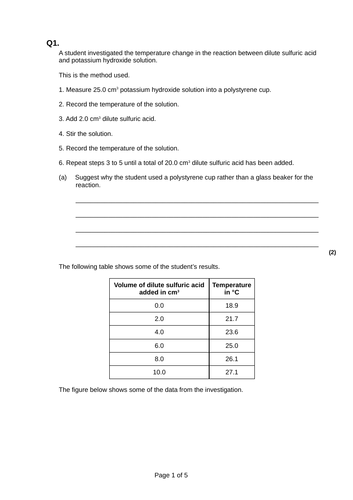



Energy is conserved in chemical reactions. The amount of energy in the universe at the end of a chemical reaction is the same as before the reaction takes place. If a reaction transfers energy to the surroundings the product molecules must have less energy than the reactants, by the amount transferred. An exothermic reaction is one that transfers energy to the surroundings so the temperature of the surroundings increases. Exothermic reactions include combustion, many oxidation reactions and neutralisation. Everyday uses of exothermic reactions include self-heating cans and hand warmers. An endothermic reaction is one that takes in energy from the surroundings so the temperature of the surroundings decreases. Endothermic reactions include thermal decompositions and the reaction of citric acid and sodium hydrogencarbonate. Some sports injury packs are based on endothermic reactions. Students should be able to: • distinguish between exothermic and endothermic reactions on the basis of the temperature change of the surroundings • evaluate uses and applications of exothermic and endothermic reactions given appropriate information.
Something went wrong, please try again later.
This resource hasn't been reviewed yet
To ensure quality for our reviews, only customers who have purchased this resource can review it
Report this resourceto let us know if it violates our terms and conditions.
Our customer service team will review your report and will be in touch.
